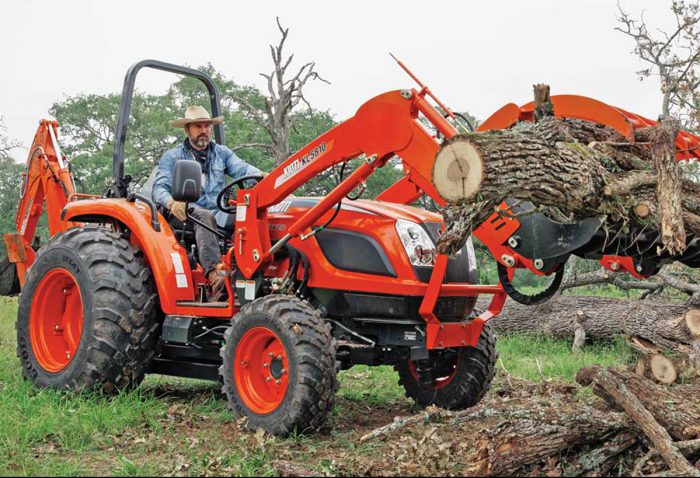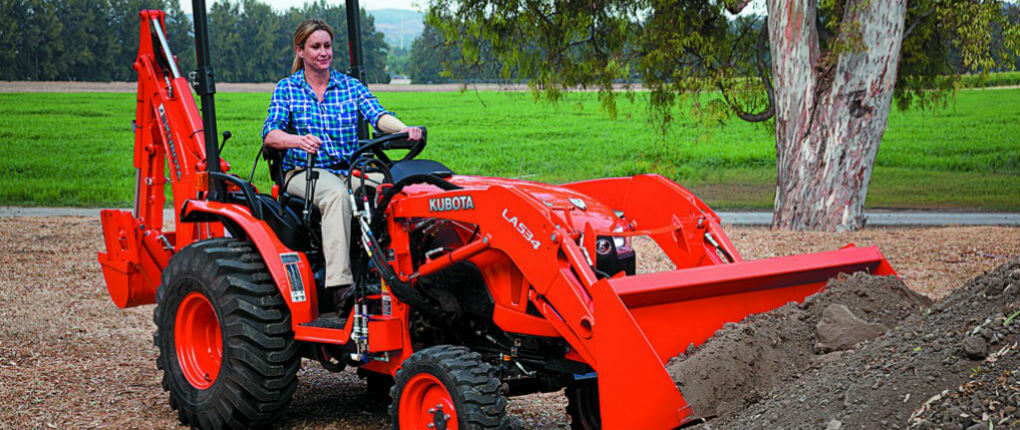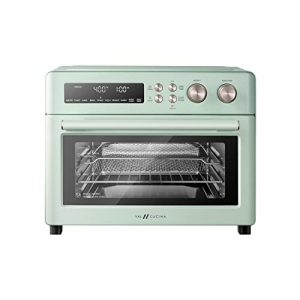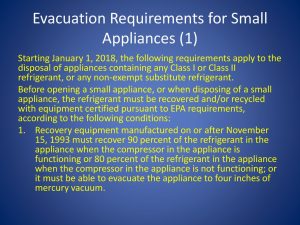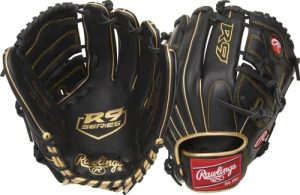Contents
- Understanding Front End Loaders
- Considerations for Choosing a Front End Loader
- Determining the Right Size
- Assessing Weight Capacity
- Compatibility with Your Kubota Tractor
- Loader Attachment System
- Lifting Height and Reach
- Operating Controls and Ease of Use
- Budget and Cost Considerations
- Researching and Consulting with Experts
Whether you’re a farmer or a landscaper, finding the perfect front end loader for your Kubota tractor can make all the difference in your day-to-day operations. From moving heavy materials to clearing debris, this essential attachment can greatly enhance your productivity. But with so many options available, how do you choose the right one? In this article, we will guide you through the important factors to consider when selecting a front end loader for your Kubota tractor, ensuring that you make an informed decision that meets your specific needs. So let’s get started and find the perfect match for your Kubota tractor!
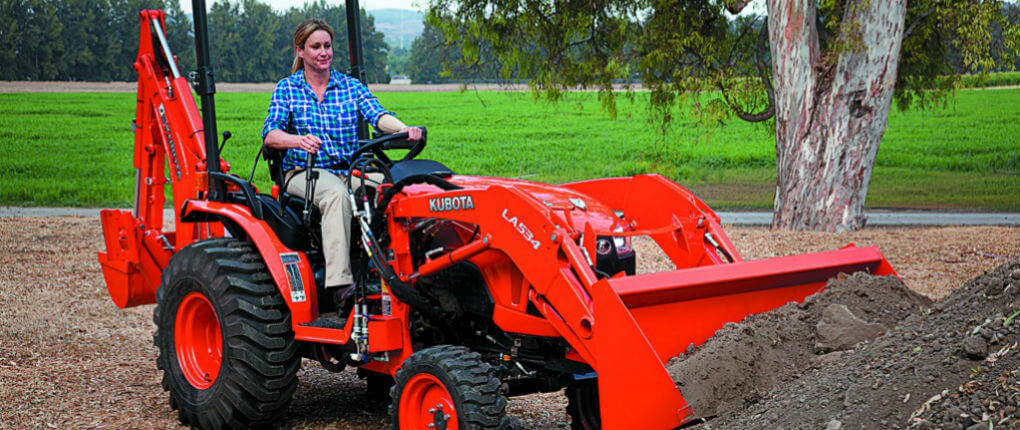
Understanding Front End Loaders
What is a front end loader?
A front end loader is a piece of equipment designed to be attached to a Kubota tractor, specifically to the front end of the tractor. It is commonly used in a variety of industries such as construction, agriculture, and landscaping. The primary function of a front end loader is to lift and transport heavy materials, such as soil, gravel, or large objects like logs. It consists of a bucket or other attachments that can easily scoop, lift, and unload materials.
Why do you need a front end loader for your Kubota tractor?
Having a front end loader for your Kubota tractor can greatly enhance its functionality and versatility. Whether you are a farmer, a landscaper, or a contractor, a front end loader can be a valuable tool in completing various tasks more efficiently. It enables you to move heavy materials with ease, saving you time and physical effort. With a front end loader, you can quickly load and unload materials, transport them to different locations, and perform a wide range of tasks effectively.
Benefits of using a front end loader
There are numerous benefits to using a front end loader for your Kubota tractor:
- Increased productivity: A front end loader allows you to handle larger quantities of materials in a shorter amount of time, thereby increasing your overall productivity.
- Versatility: With various attachment options available, such as buckets, pallet forks, and grapple attachments, you can use the front end loader for a wide range of applications and tasks.
- Time and labor savings: By mechanizing tasks that would otherwise require manual labor, a front end loader can significantly reduce the time and effort required to complete a job.
- Improved efficiency: Front end loaders are designed to handle heavy loads efficiently, allowing you to complete tasks in a more streamlined manner.
- Enhanced convenience: The ability to lift and move materials effortlessly provides a level of convenience that not only saves time but also reduces physical strain on the operator.
Considerations for Choosing a Front End Loader
Weight capacity
When choosing a front end loader for your Kubota tractor, it is essential to consider its weight capacity. The weight capacity refers to the maximum weight the loader can safely handle. It is crucial to select a loader with a weight capacity that matches or exceeds the heaviest loads you anticipate lifting. Overloading a front end loader can lead to safety hazards and premature wear and tear on the equipment.
Compatibility with your Kubota tractor
Another crucial factor to consider is the compatibility of the front end loader with your specific Kubota tractor model. Check the manufacturer’s specifications to ensure that the loader is designed to fit your tractor’s specifications, such as hydraulic compatibility, mounting points, and weight distribution. Choosing a compatible loader ensures optimal performance and reduces the risk of damage to both the loader and the tractor.
Loader attachment system
Front end loaders come with different attachment systems, such as quick attach systems or pin-on systems. Consider the type of attachments you may need for your intended tasks and choose a loader with a compatible attachment system. Quick attach systems provide convenience and speed when changing attachments, allowing you to switch between different tools with ease. On the other hand, pin-on systems offer a secure and reliable attachment option suitable for heavy-duty applications.
Lifting height and reach
Evaluate the maximum lifting height and reach you require for your specific tasks. The lifting height refers to the maximum height at which the loader can lift materials, while the reach refers to the horizontal distance from the tractor’s front to the point where materials can be dumped. Ensure that the front end loader you choose offers sufficient lift height and reach to meet your operational needs. This consideration is particularly important if you will be working in areas with limited access or require precise placement of materials.
Operating controls and ease of use
The operating controls and ease of use of a front end loader are crucial for ensuring a comfortable and efficient operating experience. Look for a loader that offers ergonomic controls positioned in a user-friendly manner, allowing for intuitive operation. Consider features such as joystick controls, adjustable seating positions, and clear visibility from the operator’s seat. Opting for a loader with well-designed controls and ease of use will enhance your productivity and minimize operator fatigue.
Determining the Right Size
Evaluate your typical tasks and load requirements
To determine the right size of the front end loader for your Kubota tractor, evaluate your typical tasks and load requirements. Consider the types of materials you will be handling, their weight, and the volume you anticipate moving. This information will help you narrow down the size options and ensure that the loader you choose can handle your specific workload effectively.
Consider your Kubota tractor’s horsepower
The horsepower of your Kubota tractor plays a crucial role in determining the appropriate size of the front end loader. Higher horsepower tractors can handle larger and more powerful loaders, providing increased lifting capacity and productivity. Consult your tractor’s specifications or consult an expert to determine the compatible loader sizes based on your tractor’s horsepower.
Matching the loader size to your tractor model
To achieve optimal performance and compatibility, it is crucial to match the size of the loader to your specific Kubota tractor model. Each tractor model has its own weight distribution and hydraulic capacity, which can affect the suitability of different loader sizes. Consult the manufacturer’s recommendations or seek advice from a Kubota expert or dealer to ensure the loader size matches your tractor model.
Assessing Weight Capacity
Understanding lift capacity and breakout force
When assessing weight capacity, understanding lift capacity and breakout force is essential. Lift capacity refers to the maximum weight a front end loader can safely lift at a specific height and reach. Breakout force, on the other hand, measures the force exerted by the loader’s arms to break free from a heavy load. It is important to consider both lift capacity and breakout force to ensure that the front end loader can handle your intended tasks without strain or risk of failure.
How much weight do you need to lift?
Evaluate the weights of the materials you plan to lift regularly. Consider the heaviest loads you anticipate and choose a front end loader with a weight capacity that can accommodate those loads. It is better to select a loader with a slightly higher weight capacity than you currently need to allow for flexibility and potential future requirements.
Determining the right weight capacity for your needs
To determine the right weight capacity for your needs, consider the weights of your typical loads and multiply them by a safety factor. The safety factor accounts for any potential variations in loads or unexpected circumstances. It is advisable to consult a Kubota expert or dealer who can guide you in selecting the appropriate weight capacity based on your specific requirements.
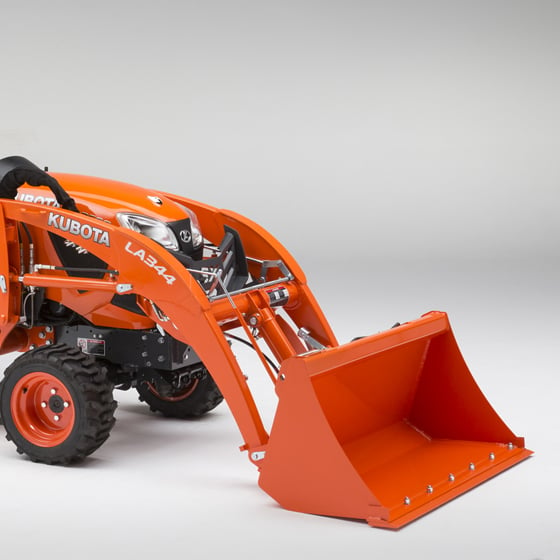
Compatibility with Your Kubota Tractor
Check the tractor’s hydraulic system
Before choosing a front end loader, check your Kubota tractor’s hydraulic system to ensure compatibility. Evaluate the hydraulic flow rate, pressure, and any specific requirements mentioned in the tractor’s documentation. Match the loader’s hydraulic system specifications with the tractor’s hydraulic capabilities to ensure seamless integration and optimal performance.
Ensure proper mounting and fit
Proper mounting and fit are crucial for ensuring the front end loader’s stability and safety during operation. Double-check the mounting points and specifications of the loader to ensure they align with your Kubota tractor. Verify that the loader’s frame and associated components can be securely attached to the tractor without compromising its structural integrity.
Consider any special requirements or modifications
Depending on your specific Kubota tractor model, you may have unique requirements or modifications necessary for the front end loader’s installation. Some tractors may require additional components or adaptations to ensure proper fit and operation. Take into account any special requirements or modifications needed and consult with a Kubota expert or dealer for guidance and assistance.
Loader Attachment System
Different attachment systems available
Front end loaders come with different attachment systems, each offering its own advantages and use cases. Common attachment systems include quick attach systems and pin-on systems. Quick attach systems enable speedy and convenient attachment changes, allowing you to switch between tools efficiently. Pin-on systems provide a secure and reliable connection suitable for heavy-duty applications. Consider your specific needs and tasks to determine which attachment system would best suit your requirements.
Consider your specific needs and tasks
When selecting a loader attachment system, consider the specific needs and tasks you will be performing with your Kubota tractor. If you anticipate frequently changing attachments or require versatility in your operations, a quick attach system may be the ideal choice. Alternatively, if you primarily handle heavy materials or perform tasks that require enhanced stability, a pin-on system may be more suitable. Matching the attachment system to your specific needs will contribute to a more efficient and productive working environment.
Ease of attachment and detachment
Evaluate the ease of attachment and detachment when choosing a loader attachment system. Consider factors such as the accessibility of attachment points, the simplicity of the mounting process, and the time required to switch between different attachments. A loader with an attachment system that offers easy and quick changes will enable you to transition seamlessly between tasks, saving you valuable time and effort.
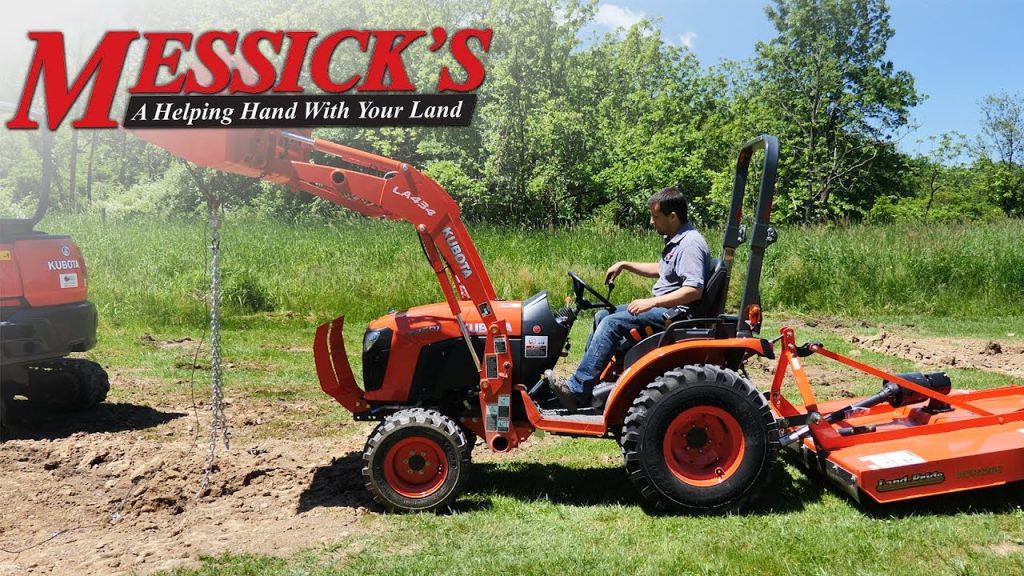
Lifting Height and Reach
Evaluate the maximum height and reach needed
To determine the lifting height and reach required for your front end loader, evaluate the specific tasks and environments in which you will be operating. Consider the height at which materials need to be lifted and the distance at which they need to be placed or dumped. Ensure that the front end loader you choose provides sufficient lifting height and reach to meet your operational requirements without any limitations or safety concerns.
Consider your typical load placement
Think about the typical load placement required for your tasks. If you often need to place materials in high areas or dump them into elevated containers, opt for a front end loader with increased lifting height capabilities. Similarly, if your tasks involve placing materials in tight or confined spaces, consider a loader with adequate reach capacity to ensure optimal maneuverability and efficient load placement.
Ensure the loader’s lift height meets your requirements
Before finalizing the selection of a front end loader, verify that the lift height meets your specific requirements. Take into account any potential variations in load height and consider any future tasks or projects that may require additional lifting height. It is crucial to choose a loader that provides enough lift height to accommodate your current and future needs.
Operating Controls and Ease of Use
Ergonomics and ease of control
Operating a front end loader for extended periods can be physically demanding. Therefore, choosing a loader with ergonomic design elements and intuitive controls is crucial. Look for features such as adjustable seating positions, conveniently positioned controls, and ergonomic joystick controls. Ergonomically designed loaders enhance operator comfort and reduce fatigue, allowing for more productive and efficient work.
Comfort and accessibility of controls
Ensure that the front end loader’s controls are easily accessible from the operator’s seat. The controls should be within comfortable reach, allowing the operator to operate the loader conveniently without straining or stretching. Verify the layout and design of the controls and consider loader models that prioritize operator comfort and a user-friendly interface.
Safety features and operator-friendly design
Safety should be a top priority when choosing a front end loader for your Kubota tractor. Look for loaders that offer safety features such as integral lockout systems, emergency stop switches, and enhanced visibility from the operator’s seat. Additionally, consider loaders with operator-friendly designs that prioritize easy entry and exit from the tractor cabin and provide ample space and visibility for the operator to perform tasks safely.
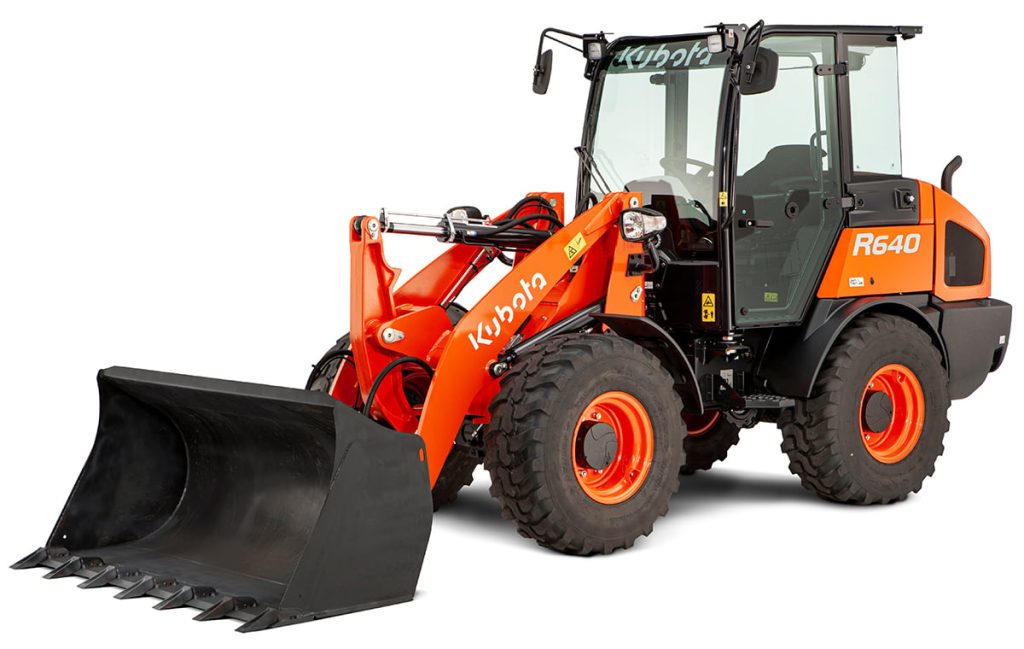
Budget and Cost Considerations
Evaluate your budget for a front end loader
Before making a purchase, evaluate your budget for a front end loader. Determine the financial resources you are willing to allocate for this investment, considering both the initial purchase cost and any additional expenses such as installation and maintenance. It is important to strike a balance between affordability and quality to ensure you get a loader that meets your needs while staying within your budget.
Compare prices from different manufacturers
To make an informed decision, compare prices from different manufacturers. Look for reputable brands or manufacturers known for producing high-quality front end loaders. Keep in mind that the cheapest option may not always be the most cost-effective in the long run. Consider the loader’s durability, performance, and features in addition to the price tag when making your final decision.
Consider long-term costs and maintenance
In addition to the initial purchase cost, consider the long-term costs and maintenance requirements of the front end loader. Evaluate factors such as the availability and cost of replacement parts, the reputation of the manufacturer for quality and durability, and the level of support and service provided by the manufacturer or dealer. Choosing a loader that offers a good balance of affordability, quality, and ease of maintenance will save you money in the long run.
Researching and Consulting with Experts
Read customer reviews and testimonials
Before making a final decision, read customer reviews and testimonials of the front end loaders you are considering. Customer feedback provides valuable insights into the performance, reliability, and overall satisfaction of other tractor owners who have used the loaders. Take note of any recurring positive or negative feedback patterns to help inform your decision-making process.
Consult with Kubota experts or dealers
Consulting with Kubota experts or authorized dealers can provide valuable guidance and assistance in choosing the right front end loader for your Kubota tractor. These professionals have in-depth knowledge of the different loader models and their compatibility with Kubota tractors. They can help clarify any technical specifications, offer insights based on their experience, and recommend the most suitable options based on your specific requirements.
Seek advice from experienced tractor owners
To gain a practical perspective, seek advice from experienced tractor owners who have prior experience with front end loaders. Their firsthand insights and recommendations can help you make an informed decision and avoid potential pitfalls. Engaging in discussions with experienced owners allows you to tap into their knowledge and learn from their experiences, enabling you to select the most suitable loader for your needs.
In conclusion, choosing the right front end loader for your Kubota tractor involves considering various factors such as weight capacity, compatibility, attachment system, lifting height, operating controls, budget, and consulting with experts. By thoroughly evaluating your needs, considering the specific requirements of your tractor, and conducting thorough research, you can select a front end loader that enhances the functionality and versatility of your Kubota tractor, ultimately improving your productivity and efficiency in various tasks and applications.
